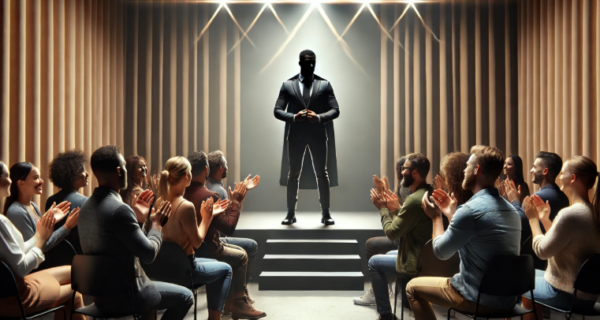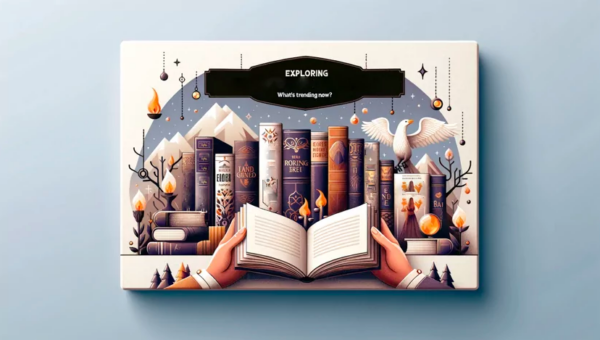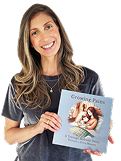Writing is a bit like choosing an outfit for the day: you’ve got to pick the right style, tone, and choose the best genre for your writing style to fit the occasion. Just as you wouldn’t wear a tuxedo to the beach (unless you’re really making a statement), you wouldn’t use the same writing style for a formal report as you would for a blog post about your latest Netflix binge.
Whether you’re penning a gripping novel, a detailed how-to guide, or a social media update, understanding the types of writing is crucial. Each type, style, and tone serves a specific purpose, and when used effectively, they can make your writing not just good, but memorable.
In this post, we’ll explore the different types of writing, from the creative and imaginative to the structured and professional, helping you master the art of writing for any purpose.
What Are the Different Types of Writing?
When it comes to writing, not all types are created equal. There are four main types of writing that serve as the foundation for almost every piece of writing you’ll come across. Understanding these categories will help you determine what type of writing best suits your purpose, audience, and message. Let’s break them down:
Narrative Writing
Narrative writing is all about telling a story. Whether you’re writing a novel, a short story, or a memoir, narrative writing focuses on characters, events, and conflict. It’s the kind of writing that paints vivid pictures and evokes emotions, pulling the reader into the world you’ve created. Think of it as the “fun” type — where you can get creative, let your imagination roam, and take the reader on an unforgettable journey.
Descriptive Writing
Descriptive writing is like painting a picture with words. It’s used to describe a scene, a character, or an event in such detail that the reader can practically see it. This type of writing is rich with sensory details, focusing on sight, sound, taste, touch, and smell. It’s perfect for setting the scene in a story or providing detailed instructions in technical writing. The goal is to make the reader feel like they’re experiencing what you’re describing firsthand.
Expository Writing
Expository writing is all about explaining or informing. Think of it as the “no fluff” type of writing. It’s straightforward, clear, and meant to provide factual information, often without personal opinions. This style is commonly used in academic papers, how-to guides, and articles. The goal here is to make complex ideas easily understandable for the reader. No drama, no suspense — just the facts.
Persuasive Writing
Persuasive writing is your tool for convincing others to see things your way. This type of writing aims to influence the reader’s thoughts, feelings, or actions. Whether you’re writing an opinion piece, a product review, or a political argument, the key is to present strong arguments, use evidence, and appeal to the reader’s emotions. The goal is to persuade — not just inform. Persuasive writing is where you bring your A-game in argumentation and rhetoric.
Each of these types serves a different purpose, and you’ll find yourself using all of them depending on what you’re writing. By understanding their distinct features, you’ll be better equipped to choose the right approach for your next writing project.
Types of Writing Styles
Now that you’ve got a handle on the basic types of writing, let’s dive into the how of writing. Your style is the fingerprint of your writing — it’s what makes your words uniquely yours. But just as we have different writing types for different purposes, there are various writing styles that help you shape your content to match your audience and goal. Let’s explore some of the most common writing styles:
Creative Writing Style
Creative writing is where imagination runs wild. This style is all about crafting engaging stories, characters, and worlds. It’s often used in fiction, poetry, and drama, where writers have the freedom to experiment with language, structure, and theme. Whether you’re penning an epic fantasy novel or writing a heartfelt poem, creative writing focuses on expression and emotion, using vivid imagery and deep characters to draw readers into new worlds. Think of it as the “artsy” style — where creativity knows no bounds.
Technical Writing Style
If clarity and precision are your top priorities, technical writing is your go-to. It’s used for documents like manuals, guides, and product instructions, where the goal is to present information in the clearest and most logical way possible. Technical writing avoids any ambiguity, focusing on straightforward facts and step-by-step instructions. If you’ve ever read a user manual and thought, “This is too detailed,” you’ve experienced technical writing at its best — thorough, precise, and functional.
Academic Writing Style
Academic writing is structured, formal, and often backed by research. It’s used in scholarly papers, research articles, and essays. The tone tends to be more objective and impersonal, focusing on presenting evidence-based arguments. The goal of academic writing is to inform and argue in a way that’s logical and clear, without personal opinion overshadowing the facts. If you’ve ever read a journal article that made your head spin, you know just how serious academic writing can be.
Business Writing Style
Business writing is all about clear, concise communication. It’s used in emails, reports, proposals, brand books and other workplace documents where the goal is to convey information efficiently without wasting anyone’s time. This style tends to be direct, professional, and free of unnecessary jargon. Think of it as the “no-nonsense” style — where your ideas need to be communicated quickly and effectively, with a focus on results.
Journalistic Writing Style
The journalistic style is all about informing the reader quickly and accurately. Common in news articles and reports, journalistic writing prioritizes brevity and clarity. The aim is to convey the facts without personal bias, often answering the “who, what, when, where, why, and how” in the first few sentences. Journalists use straightforward language, stick to the facts, and avoid unnecessary detail. It’s the style that keeps you up-to-date with the world — no fluff, just facts.
Informal Writing Style
The informal writing style is relaxed, conversational, and often used in blogs, social media, and personal communication. It’s the style that allows for humor, casual language, and a more personal tone. When you’re writing a letter to a friend or updating your status on social media, you’re using informal writing. It’s approachable and often creates a sense of connection with the reader, making it ideal for engaging with an audience on a more personal level.
Each writing style has its own set of rules and goals, but all share the fundamental aim of effective communication. The key is knowing which style to use for the task at hand — whether you’re spinning a creative tale, drafting a technical manual, or writing a professional email.
Types of Tones in Writing
The tone of your writing is the attitude you convey toward your subject or audience. It sets the emotional context and helps readers understand your intent. Think of it as the mood of your writing — it influences how readers perceive your words. Choosing the right tone is crucial for engaging your audience, and different situations call for different tones. Here are some key types of tones used in writing:
Formal Tone
- Purpose: Used for professional, academic, or official writing.
- Characteristics: Polite, respectful, and structured language. Avoids contractions and slang.
- When to Use: Academic papers, business emails, official reports, legal documents.
Example: “The results of the study indicate that further research is required to draw conclusive results.”
Informal Tone
- Purpose: To create a casual, friendly, and conversational vibe.
- Characteristics: Relaxed, approachable, and sometimes humorous. It may include contractions and colloquial expressions.
- When to Use: Personal blogs, social media posts, casual letters.
Example: “I’m so excited to share this new idea with you guys, I think it’s going to be awesome!”
Persuasive Tone
- Purpose: To convince the reader to agree with your perspective or take a specific action.
- Characteristics: Confident, assertive, and convincing. Often uses logic, emotion, and compelling arguments.
- When to Use: Advertising, opinion pieces, persuasive essays, calls to action.
Example: “By switching to this eco-friendly alternative, you’re not only saving money but also contributing to a better planet.”
Sarcastic Tone
- Purpose: To mock, ridicule, or express irony.
- Characteristics: Exaggerated, often saying the opposite of what is meant, with an edge of humor.
- When to Use: Satirical writing, humor articles, social commentary.
Example: “Oh great, another meeting about meetings — just what we all needed today!”
Optimistic Tone
- Purpose: To uplift, inspire, and motivate the reader.
- Characteristics: Positive, encouraging, and hopeful. Focuses on solutions, possibilities, and future improvements.
- When to Use: Self-help books, motivational speeches, positive blog posts.
Example: “Every setback is just a stepping stone to success, and you’re one step closer to reaching your goals.”
Serious Tone
- Purpose: To convey importance or solemnity.
- Characteristics: Straightforward, direct, and free of humor. Focuses on delivering the message clearly and respectfully.
- When to Use: Serious news articles, professional reports, discussions on sensitive topics.
Example: “This issue must be addressed with urgency, as it impacts the safety of our community.”
Humorous Tone
- Purpose: To entertain or amuse the reader.
- Characteristics: Light-hearted, witty, and playful. Uses jokes, puns, or absurdity to evoke laughter.
- When to Use: Personal blogs, fiction, satirical writing, casual writing.
Example: “I tried to take a break from work, but my computer thought I was just kidding. It clearly hasn’t learned about self-care.”
How to Choose the Right Tone
Selecting the right tone is a balancing act. Here are a few quick tips:
Know Your Audience: The tone should fit the expectations and preferences of your readers. A formal tone works well for professionals, while an informal tone is better for a casual audience.
Understand Your Purpose: What are you trying to achieve? If you’re trying to persuade, a confident and assertive tone will be effective. If you’re telling a story, a friendly or humorous tone may be more suitable.
Match the Topic: Consider the nature of the subject you’re discussing. Serious topics require a serious tone, while light topics may benefit from a humorous or optimistic approach.
Types of Writing Genres
Genres serve as the foundation for categorizing writing, and understanding the different writing genres helps you choose the right one for your project. Whether you’re looking to entertain, inform, or provoke thought, each genre has its unique characteristics and purpose. Let’s explore some of the most common genres in writing:
Fiction
Purpose: To create imaginative worlds and characters, exploring human experiences through storytelling.
What It Includes:
- Novels, short stories, fantasy, mystery, romance, science fiction, literary fiction, historical fiction.
- Key Feature: The content is entirely fictional, allowing the writer to invent characters, settings, and events.
Best For: When you want to tell a captivating story with characters that evolve through challenges.
Nonfiction
Purpose: To inform, explain, or describe real-world events, facts, and people.
What It Includes:
- Biographies, memoirs, essays, articles, self-help, documentaries.
- Key Feature: Based on factual information and real events, often aiming to educate or provide insight.
Best For: When you need to share knowledge, tell personal stories based on real events, or offer advice based on facts.
Poetry
Purpose: To evoke emotion, express feelings, and convey ideas through a stylized, rhythmic form of writing.
What It Includes:
- Haikus, sonnets, free verse, spoken word, epic poems.
- Key Feature: Focuses on emotions and experiences, using language that’s rich in metaphor, rhythm, and imagery.
Best For: When you want to express deep emotions or explore abstract themes through creative language.
Drama
Purpose: To portray human conflict and emotion through dialogue and action, typically for performance.
What It Includes:
- Plays, screenplays, teleplays, radio dramas.
- Key Feature: Written specifically for performance, involving characters who interact with each other to move the plot forward.
Best For: When you’re writing for the stage, film, or TV, where dialogue and action are central to the story.
Journalism
Purpose: To report on current events and provide factual information, often with a focus on timeliness and objectivity.
What It Includes:
- News articles, investigative pieces, feature stories, editorials.
- Key Feature: Focuses on reporting the truth with minimal bias, answering key questions (who, what, when, where, why, how).
Best For: When you need to inform the public about recent events or share factual information clearly and concisely.
Business Writing
Purpose: To communicate information efficiently and professionally in a workplace context.
What It Includes:
- Emails, reports, memos, proposals, business letters.
- Key Feature: Focuses on clarity, brevity, and professionalism to facilitate business decisions or communication.
Best For: When you need to convey important business information or persuade a colleague or client in a professional manner.
Fantasy
Purpose: To create magical or otherworldly experiences, often with mythical creatures and fantastical settings.
What It Includes:
- Epic fantasy novels, adventure stories, magical realism.
- Key Feature: Involves elements that defy the natural laws of the world, such as magic, mythical creatures, and fantastic landscapes.
Best For: When you want to transport readers to an imaginative world with endless possibilities.
Science Fiction
Purpose: To explore futuristic concepts, advanced technology, space exploration, and alternate realities.
What It Includes:
- Dystopian novels, space operas, cyberpunk, time travel.
- Key Feature: Focuses on scientific advancements, speculative ideas, and what the future could look like.
Best For: When you want to explore the impact of technology, society, or the unknown on the human experience.
Choosing the Right Genre for Your Writing
Selecting the right genre for your writing is essential to effectively conveying your message. Each genre has its own rules and style, so understanding the genre you’re writing in helps ensure you meet your audience’s expectations. Fiction genres like fantasy and science fiction allow for creative expression, while nonfiction focuses on factual accuracy and education. Similarly, poetry and drama provide unique ways to express emotion and ideas, while business writing and journalism prioritize clarity and professionalism.
By matching your writing project to the appropriate genre, you’ll be better equipped to communicate your ideas, tell your story, or inform your audience in a way that resonates.
How to Choose the Right Type, Style, and Tone for Your Writing
Choosing the right type, style, and tone for your writing can make all the difference in how your message is received. Think of these elements as the building blocks of your writing, each serving a different function to ensure you hit the right note with your audience. Here’s how to decide which approach to take based on your goals:
Consider Your Purpose
The first step in choosing the right type, writing style, and tone is understanding the purpose of your writing. What do you want to achieve? Are you trying to inform, persuade, entertain, or evoke emotion?
Inform: If your goal is to educate or provide facts (e.g., writing an instructional manual, a blog post, or a report), a descriptive or expository writing style will work best, with a formal or neutral tone.
Persuade: If you want to convince your audience of something (e.g., writing an advertisement or an opinion article), persuasive writing with a confident, assertive tone will be most effective.
Entertain: If you’re writing a novel, short story, or screenplay, you’ll likely use creative writing and narrative style to engage your readers with a dynamic tone that matches the story’s mood.
Know Your Audience
Who is going to read your work? Understanding your audience’s preferences and expectations will help you decide which style and tone will resonate best with them.
- Formal tones work best with professional or academic audiences. If you’re writing a research paper or a business proposal, clarity and formality are key.
- Informal tones are more suited for a casual blog post, social media content, or personal emails, where friendliness and relatability are prioritized.
- Consider age, interests, and cultural context when choosing the right tone — a humorous, light-hearted tone might be great for a younger audience but inappropriate for more serious topics like healthcare or finance.
Align with the Genre
Different genres of writing come with their own expectations regarding tone and style. Here are a few examples of how to adapt:
Fiction: In fantasy or science fiction, you may want to adopt a creative writing style with descriptive language to vividly bring the world and characters to life. The tone could be adventurous or mysterious, depending on the story.
Nonfiction: When writing a how-to guide or an informational article, you’ll use an expository style with a neutral or helpful tone. You want to present the information clearly without unnecessary embellishments.
Journalism: If you’re writing news or journalistic pieces, you’ll adopt a concise, objective writing style, with a neutral tone that reports facts without bias.
Find the Right Balance
Once you’ve determined your purpose, audience, and genre, finding the right balance of style and tone is key to creating a successful piece of writing.
- For example, a formal style might work for a report, but if you’re writing a newsletter, you may want to incorporate a slightly informal tone to make it more approachable.
- In persuasive writing, it’s important to balance assertiveness with respect for the reader’s perspective — you want to be convincing, not overbearing.
Consider Context and Medium
The medium through which your writing is delivered can also influence your choices.
A business email should have a formal tone, while a blog post on a personal website might allow for a more casual or conversational style.
Similarly, a press release requires a formal, objective tone, while a creative writing piece (like a poem or short story) allows for more freedom with tone, style, and emotional expression.
Bringing It All Together
Knowing and understading the types of writing, styles, and tones is crucial for any writer who wants to communicate effectively and create content that resonates with their audience. By selecting the right combination of these elements, you can elevate your writing, whether you’re crafting a compelling story, an informative blog post, or a persuasive marketing campaign.
Remember, there’s no one-size-fits-all approach. Your writing type, style, and tone should be tailored to fit the purpose of your piece, the expectations of your audience, and the medium you’re using. With practice and attention to detail, mastering these tools will help you write with clarity, impact, and creativity.
So, next time you sit down to write, ask yourself: What’s my goal? Who am I writing for? And how can I use these elements to engage my readers in the best way possible? Once you’ve got that figured out, you’re ready to take on any writing challenge with confidence!
Your Publishing Journey Awaits – Start NowFAQs – Types of Writing
Q1: What are the 7 types of creative writing?
The 7 types of creative writing include:
- Poetry: Expresses emotions and ideas using rhythm, meter, and figurative language.
- Fiction: Involves stories created from imagination, including genres like mystery, fantasy, and romance.
- Drama: Writing for performance, including plays and screenplays.
- Short Stories: Brief narratives that explore themes, characters, and conflicts.
- Novels: Longer works of fiction, often exploring complex themes and characters.
- Memoirs: Personal stories and reflections written from the author’s perspective.
- Creative Nonfiction: Writing that blends storytelling with factual content, often found in essays or travel writing.
Q2: How many writing styles are there?
There are several writing styles, but the main ones are:
- Narrative Writing: Telling a story with characters, events, and conflict.
- Descriptive Writing: Using detailed language to paint a picture in the reader’s mind.
- Expository Writing: Explaining or informing the reader about a subject with clarity and facts.
- Persuasive Writing: Aimed at convincing the reader to adopt a certain viewpoint or take action.
- Creative Writing: Writing that expresses imagination and originality, often in fiction or poetry.
Q3: What are the different modes of writing?
The different modes of writing refer to the broader methods used to convey a message:
- Narrative Mode: Tells a story, with characters, setting, and plot.
- Expository Mode: Provides information or explanations on a topic.
- Descriptive Mode: Paints a vivid picture through detailed imagery and sensory language.
- Persuasive Mode: Attempts to influence the reader’s thoughts or actions.
- Argumentative Mode: Focuses on presenting evidence and arguments to support a claim.
Q4: What are the 4 types of writing skills?
The 4 essential writing skills include:
- Grammar and Syntax: The ability to use language correctly and structure sentences properly.
- Vocabulary: The range of words used effectively to communicate ideas.
- Organization: Structuring content logically, with a clear introduction, body, and conclusion.
- Voice and Tone: Developing a consistent style that aligns with the purpose and audience, adjusting tone as necessary.
Q5: What are the different formats of writing?
Writing can come in various formats depending on the medium and purpose:
- Essays: A structured piece of writing that explores a topic from an analytical perspective.
- Articles: Informative writing that’s often published in newspapers or magazines.
- Reports: Objective writing that conveys information, often with analysis or findings.
- Letters: Personal or professional written communication.
- Blog Posts: Informal or semi-formal writing intended for online audiences, often with a conversational tone.
Q6: What are the 5 basics of writing?
The 5 basics of writing are:
- Purpose: Understanding the goal of your writing (to inform, entertain, persuade, etc.).
- Audience: Knowing who you’re writing for and tailoring your message to them.
- Structure: Organizing your writing into clear, logical sections (introduction, body, conclusion).
- Clarity: Ensuring your writing is easy to understand and free from ambiguity.
- Creativity: Bringing fresh ideas, voice, and perspective into your writing to engage your reader.
Q7: What are the four main kinds of essays?
The four main types of essays are:
- Descriptive Essay: Focuses on describing a person, place, event, or object with vivid details.
- Expository Essay: Aims to explain a topic by providing clear, factual information and analysis.
- Argumentative Essay: Presents an argument on a specific issue and supports it with evidence and reasoning.
- Narrative Essay: Tells a personal story or anecdote to convey a point or lesson.







